Our Favorite Hotels in Hiroshima
• Luxury: Sheraton Grand
• 3-Star: NAGI
• Boutique: NAGI
• For Couples: Miyajima Villa
• Downtown: Hotel Intergate
• Near Hiroshima Station: Sheraton Grand
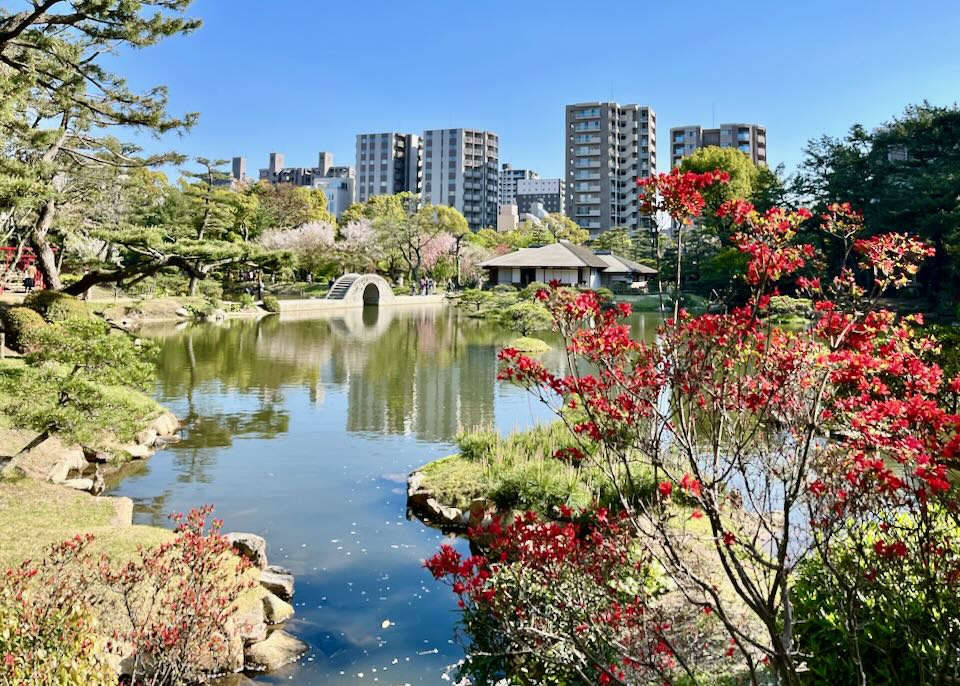
Shukkeien Garden in downtown Hiroshima.
The Best Areas to Stay in Hiroshima
Hiroshima is a modern, affluent city of just over 1 million people in the Chūgoku region of western Honshu. There’s a large expat population and a surprisingly strong identity. The Hiroshima Toyo Carp baseball team is enthusiastically supported. It’s the home base of giant multinational Mazda Motor Corp. It’s famed for locally made Kumano brushes, Miyajima shakushi (rice paddles), wood carving, pottery, and an enticing array of culinary specialties that include okonomiyaki, Japan’s favorite street food.
The “floating” torii gate at Itsukushima Shrine on Miyajima.
The city was founded as a castle town in the 16th century. The nearby Itsukushima Shrine on Miyajima is regarded as one of Japan’s most picturesque locations. Yet most visitors come to Hiroshima because of what happened here on August 6, 1945 — the target of the first-ever atomic bomb. The poignant and sometimes harrowing memorials and museums that commemorate the destruction of the city – and its subsequent rebuilding – are some of the most visited sites in Japan.
Hiroshima Neighborhoods
Hiroshima is a port city facing Hiroshima Bay, part of the Seto Inland Sea. The city center lies at the Ōta River delta, on a series of islands divided by the river’s six main channels, but the areas of interest are relatively compact. There are three main clusters of hotels in the city proper, plus the island of Miyajima, a 45-minute train and boat ride south.
The area around Hiroshima Train Station, on the eastern side of Hiroshima’s city center, is convenient for transport and the bullet train. This area is home to the Carps baseball team and Hijiyama Park (including Hiroshima’s Museum of Contemporary Art). Still, it’s a long walk or a tram ride from the attractions in Downtown Hiroshima, which is across the river.
Downtown offers the best restaurants, nightlife, Hondōri Shopping Street, Hiroshima Castle, Hiroshima Museum of Art, the new Hiroshima Soccer Stadium, and Shukkeien Garden.
The Hiroshima Peace Memorial Museum and the “Statue of Mother and Child in the Storm” with origami crane chains below.
Further west (across another branch of the river) lies Peace Memorial Park. Home to the city’s showpiece monuments commemorating the victims of the 1945 atomic bomb, including the moving Hiroshima Peace Memorial Museum.
On the west side of the park (in what we’ve dubbed “West Central Hiroshima“) is a third cluster of accommodation – it’s a little quieter, with some of the city’s best budget hotels and hostels.
If you visit Hiroshima, you should also make time for a day trip (or preferably an overnight stay) to Miyajima (aka Itsukushima). It’s a sacred island of forested mountains, traditional Japanese homes, and temples. In addition to beautiful views and hiking trails, there’s the famous red “floating” torii gate at Itsukushima Shrine.
Getting Around Hiroshima
Hiroshima doesn’t have a subway, but the old-fashioned tram (streetcar or “Hiroden”) system is convenient, efficient, and easy to use. There are nine regular lines and the “Astram” monorail. Fares are a flat ¥220 in the city center (pay when you get off in coins), and day passes are available. Everything is labeled in English, and finding where to go is easy.
Cycling is popular in Hiroshima, with Docomo operating the city’s bike-share system (aka “Peacecle,”). One-day passes are ¥1,100, with docking stations all over the city.
The Best Places to Stay in Hiroshima
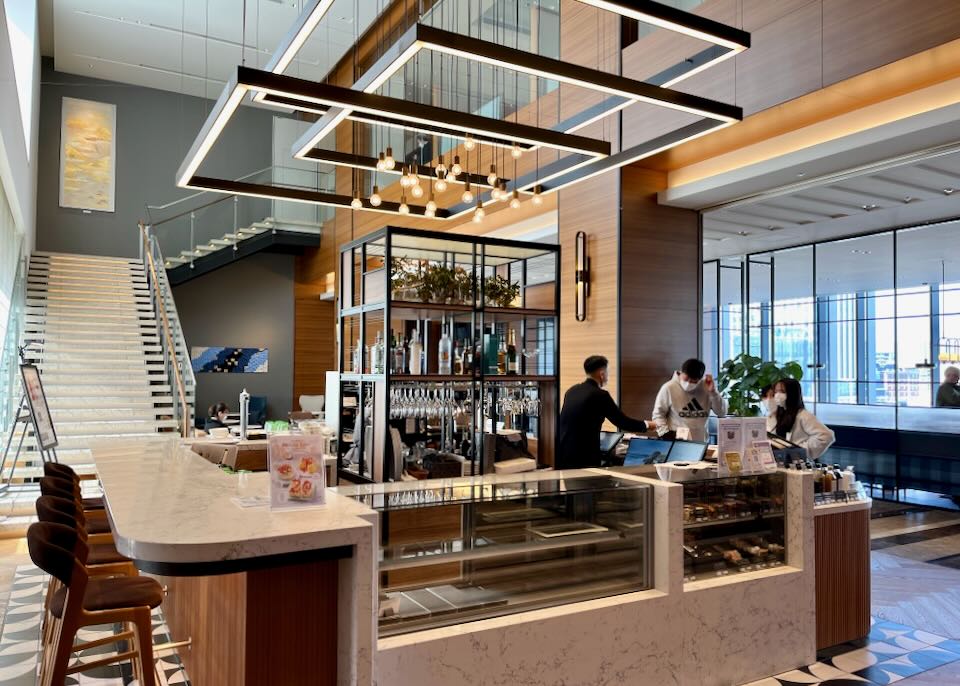
The café in the Sheraton Grand hotel lobby
- Best Luxury Hotel in Hiroshima
GRAND BASE • Sheraton Grand- Best Boutique Hotels in Hiroshima
NAGI • LAZULI- Best Cheap/Midrange Hotels in Hiroshima
Hotel Cla-ss • Dormy Inn • MangeTak • WeBase- Best Hostels in Hiroshima
Guesthouse Akicafe Inn • 36hostel • COCOBest Places in Hiroshima for…
- Best Neighborhood to Stay for First Timers/Sightseeing: Downtown Hiroshima
If you’re staying for several nights, the best neighborhood is Downtown, though you’ll have to take a taxi or tram from Hiroshima Station. Hotels will likely be within walking distance of all the major sights: Peace Memorial Park, Hiroshima Castle, Hiroshima Museum of Contemporary Art, the new Soccer Stadium, Hiroshima Prefectural Museum, and Shukkeien Garden. And also close to Hondōri Shopping Street, culinary destinations like Okonomimura (specializing in okonomiyaki), and nightlife areas such as Nagarekawa. If you’re here for just one night – to see Peace Park – and are traveling by train, it might be easier to stay near Hiroshima Station instead.- Most Romantic Neighborhood: Miyajima
The charming island of Miyajima (Itsukushima) is the best place to stay for a romantic getaway. Filled with traditional ryokans like Shiomachi-an and Kinsuikan, luxurious modern hotels like Miyajima Villa (with on-site hot springs), beautiful temples, gardens, beaches, and untouched mountains smothered with forest. Climb up Mount Misen (or take the cable car), where spring cherry blossoms dot the slopes and wild deer wander year-round.Daishō-in temple’s Rakan statues, that represent historical Buddhist monks, are capped with knitted beanies created by the faithful every year.
Visit the Itsukushima Shrine with its iconic “floating” torii gate out in the bay, or hike up to Daishō-in Buddhist temple, with its 500 enchanting Rakan statues (complete with knitted red hats).
Pick up local arts and crafts along Omotesandō Street and snack on local maple leaf-shaped cakes known as “momiji manjū.” Or share some fresh oysters from stalls on the island. It’s not convenient to explore the city, but frequent trains and boats go back and forth (allow 45 minutes each way), so spending at least one day in the city is an option.
- Best Neighborhood for Nightlife: Downtown Hiroshima
The Downtown area contains several micro-neighborhoods known for their bars and clubs (some overlap and are known by different names, but you’ll find them all within a short walk or ride of central Hondōri Shopping Street). An excellent place to start is Nagarekawa, anchored by Nagarekawa-dorī at the far eastern end of Hondōri Shopping Street. BARCOS club and bar is popular with locals and expats, as is Molly Malone’s Irish pub nearby. For cocktails, seek out Tropical Bar Revolución, tucked away on the 8th floor of a building on Nagarekawa-dorī. Raku Beer offers craft beers. The action continues further north and east along Azumaebisu and Butsudan streets in the area known as Ebisuchō. If you’re staying closer to Hiroshima Station, check out the small four-block grid of izakayas and bars known as “Ekinishi” on the northwestern side of the station. Craft beer lovers rejoice – microbreweries are booming in Hiroshima, often utilizing local ingredients such as lemons and oysters. We like Hiroshima Neighborly Brewing, on the west side of Downtown, and Session’s Brewery, a bit further west across the river.- Best Neighborhood for Food and Restaurants: Downtown Hiroshima
Though there are plenty of options (and giant food courts) in and around Hiroshima Station, you’ll have access to the best restaurants Downtown. Hiroshima is popular with foodies, for good reason. The must-see highlight is Okonomimura, three floors of an otherwise normal-looking office building crammed with 25 separate counters cooking up the local specialty, okonomiyaki.A counter in the Okonomimura complex serving fried okonomiyaki.
Often translated as “Japanese pancakes,” these fried combinations of noodles, cabbage, bean sprouts, pork, fish, eggs, and various spices and sauces are cooked layer by layer, unlike in Osaka, where it’s just mixed together on the hot plate. Hassei restaurant is another good place to try okonomiyaki.
Try the spicy local version of tsukemen at Bakudanya, fresh eel (unagi) at Kodani, or fresh seafood tempura at Tempura Tenkou. Local oysters cultivated on rafts in Hiroshima Bay are sold in restaurants all over the city, as well as “iwashi,” small sardines eaten in Hiroshima as sashimi, sushi, and tempura.
Delicious pastry offerings at Andersen.
You’ll get the best, fresh-roasted coffee at Obscura Coffee Roasters and a vast range of sandwiches and pastries at Andersen, a local institution opened in 1967 – founder Shunsuke Takaki was inspired by bakeries he visited in Denmark.
There’s also a bewildering range of local sweet treats sold in special stores along Hondōri Shopping Street and department store food courts; Kameya’s “Kawadori Mochi” (made with walnuts), Nagasakido’s butter cake, Bakken Mozart’s “Oatmeal Natural Fresh Cookies,” “Hassaku Daifuku” (mochi filled with local Hassaku oranges and other fresh fruits), and products made with local lemons (like “Lemosco” seasoning and “Setoda Lemon Cake”).
- Best Neighborhood for Shopping: Downtown Hiroshima
Downtown is also the best place to shop in Hiroshima, beginning with the main covered shopping arcade (or “shotengai”), Hondōri Shopping Street. Running east to west across Downtown for a half-mile (750m), it’s crammed with fashion, jewelry, and souvenir stores (avoid Saturday and Sunday afternoons when it’s busy).PARCO department store, Downtown Hiroshima.
Hiroshima’s landmark PARCO mall lies at the eastern end of Hondōri. Running parallel to the north, wide Aioi-dorī is home to major department stores like Sogo, Fukuya, Tokyu Hands, Mitsukoshi, and the underground Kamiyacho Shareo mall.
At the southwestern end of Downtown, it’s worth perusing Takanobashi Shopping Street, a more local arcade featuring discount stores, “cat cafés,” and local food shops.
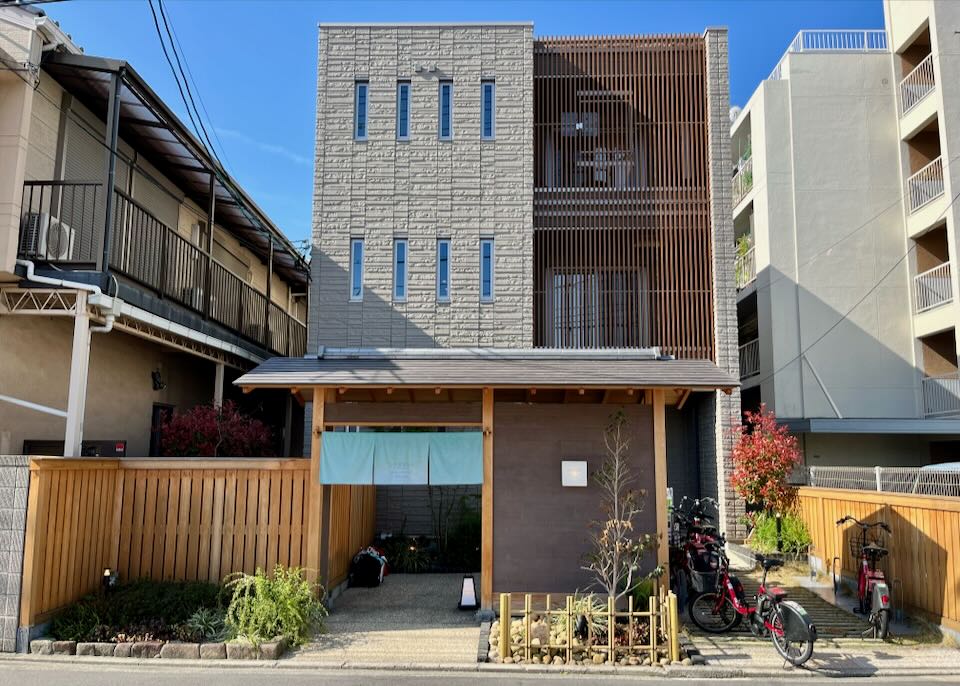
LAZULI is our favorite boutique hotel in Hiroshima.
The 4 Best Neighborhoods in Hiroshima for Tourists
1. Hiroshima Train Station
Sunset over the Hiroshima Train Station area.
Hiroshima Station anchors the eastern side of Hiroshima’s city center, the main transportation hub and bullet train (Shinkansen) station. The station features two levels packed with hundreds of food stalls and restaurants. Around the station are more restaurants, bars, shopping malls, and hotels with a vast range of accommodations, with more budget and mid-range hotels than anywhere else in the city. Staying here means you’ll be able to walk to your hotel from the station (and reach Downtown and sights like Shukkeien Garden on foot), but you will likely need to take a tram, sightseeing bus, or taxi to Peace Park.
“The Arch” by Henry Moore at the Hiroshima Museum of Contemporary Art.
This eastern side of the city center is also home to Mazda Stadium (aka Mazda Zoom-Zoom Stadium Hiroshima), home of the Carps baseball team, and hilly Hijiyama Park, a couple of tram stops to the south. The park is known for its panoramic city views, especially at sunset, and Hiroshima’s Museum of Contemporary Art (Hiroshima MOCA). The museum boasts a decent collection of modern art, but there are lots of free sculptures and installations scattered around the gardens outside, (including “The Arch” by Henry Moore and Fernando Botero’s “Little Bird”). There’s also a stylish café and gift shop.
Hijiyama Shrine.
The museum can also be accessed from the mountain’s east side thanks to the Hijiyama Skywalk, a series of escalators that begins at the Danbara Shopping Center on Peace Boulevard. The park is a popular weekend spot when food stalls serve the families picnicking and playing at Gobinden Square. The small Hijiyama Shrine guards the bottom of the western entrance to the park.
With more time, stroll into the hills north of the station to the 17th century Tōshō-gū Shrine (dedicated to Shogun Tokugawa Ieyasu). There starts a “tunnel” of red torii gates running up to the steel-domed Peace Pagoda (part of the longer Futabanosato Historical Walking Trail). The pagoda, built in 1966, is said to contain ashes of the historical Buddha donated by former Prime Minister of India, Indira Gandhi – the views are phenomenal.
Hiroshima Station just underwent a major renovation and looks new, sleek, and modern. It can be a little confusing getting in and out (it’s huge), but everything is signposted in English.
Fukuya Hiroshima Station Square department store, just outside the station, has a quiet and cheap food court on the 11th floor with spectacular views of the city and surrounding mountains, especially at sunset.
- The Best Hotels around Hiroshima Train Station
Sheraton Grand • Hotel phone: +81 82 262 7111
NAGI • Hotel phone: +81 80 8145 2741
LAZULI • Hotel phone: +81 70 4141 6043
Daiwa Roynet • Hotel phone: +81 82 554 1455- Best Cheap/Midrange Hotel
Koko • Hotel phone: +81 82 568 5056- Best Hostels
Trust Hotel • Hotel phone: +81 82 569 6433
Akicafe Inn • Hotel phone: +81 70 5525 6971
COCO • Hotel phone: +81 82 262 0291
K’s House • Hotel phone: +81 82 568 72442. Downtown Hiroshima
The covered Hondōri Shopping Street in downtown Hiroshima.
Between Hiroshima Station and Peace Memorial Park is Downtown, filled with modern office blocks, shopping streets, and malls. It’s the most central place to stay, with easy access to restaurants, nightlife, and shops, and is close to Peace Park and the station (or just a couple of tram stops from both).
Hondōri micro-district is at the heart of Downtown, named after the city’s primary covered shopping street (Hondōri Shopping Street) and home to the landmark PARCO department store.
A plate of okonomiyaki.
You’ll find the main Andersen bakery here and the famous Okonomimura complex, three levels of what looks like an office building crammed with 25 counters, all cooking up the city’s favorite dish, okonomiyaki. Hondōri is a nightlife hub with numerous places to eat and drink (as well as neighboring Hatchōbori, Ebisuchō/Butsudan Street, and Nagarekawa.)
The reconstructed Hiroshima Castle (Hiroshima-jō).
The northern part of Downtown is known as Motomachi, home to some major hotels and attractions. Hiroshima Castle (Hiroshima-jō) is relatively small. It was beautifully reconstructed in the 1950s after being destroyed by the A-bomb and now contains a fascinating history museum that offers fabulous views from the top deck. It’s also worth checking out the Gokoku Shrine on the castle grounds.
Nearby is the Hiroshima Museum of Art (known for its collection of 19th-century European art), the iconic Green Arena sports complex, and the new Hiroshima Soccer Stadium (aka Hiroshima Peace Stadium Park), home to Sanfrecce Hiroshima, one of the most successful soccer teams in the J1 League.
A short walk east lies the Hiroshima Prefectural Museum, which contains an eclectic art collection (from Max Ernst and Dalí to ancient Japanese art) and connects to the charming Shukkeien Garden. The traditional 17th-century garden and its old-style teahouses are wonderfully tranquil, its ponds full of massive carp and basking pond turtles that love to be fed.
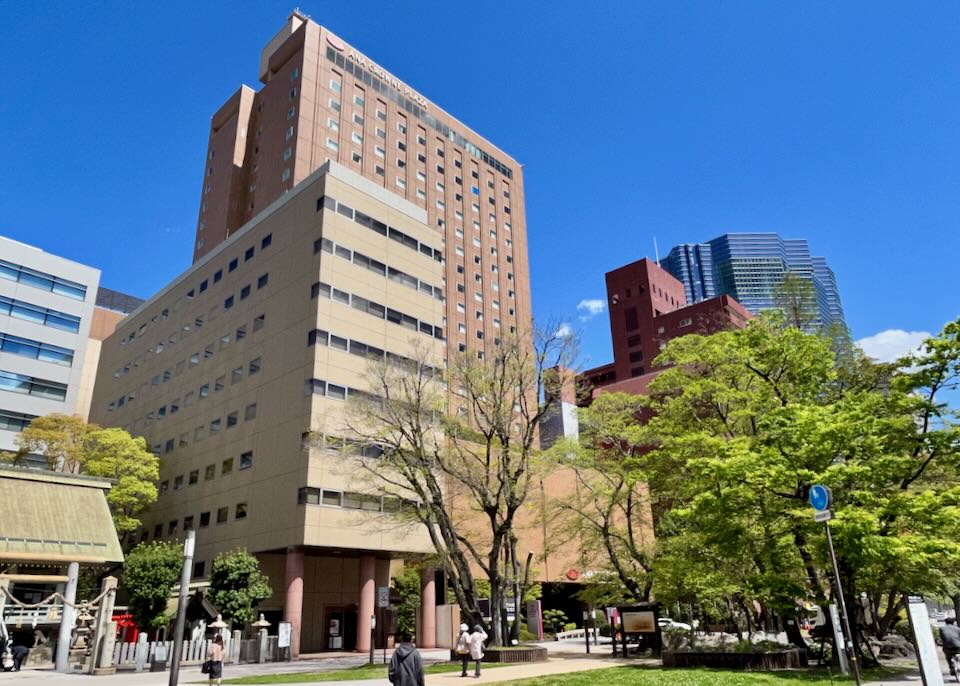
Crowne Plaza Hiroshima.
- The Best Hotels in Downtown Hiroshima
Hotel Intergate • Hotel phone: +81 82 224 6110
KIRO • Hotel phone: +81 82 545 9160
RIHGA Royal Hotel • Hotel phone: +81 82 502 1121
Crowne Plaza • Hotel phone: +81 82 241 1111- Best Cheap/Midrange Hotel
Dormy Inn • Hotel phone: +81 82 541 5489
WeBase • Hotel phone: +81 82 248 8120
Washington Hotel • Hotel phone: +81 82 553 2222- Best Hostels
POPTONE • Hotel phone: +81 70 6971 3478
Wabisabi • Hotel phone: +81 82 225 78233. West Central Hiroshima: Peace Memorial Park
Peace Memorial Park monuments commemorating the victims of the 1945 atomic bomb.
Just across the Motoyasu River from Downtown lies the vast green spaces of Peace Memorial Park. – this is what most visitors have come to Hiroshima to see. Consequently, it’s usually the busiest part of the city (aim to visit the museum early if you can). The park is beautifully maintained, with cherry blossoms along the river and memorials scattered throughout the gardens.
Most of the city was destroyed when the “Little Boy” atomic bomb was dropped here in 1945, and the Hiroshima Peace Memorial Park serves as the primary point of remembrance for those killed or affected by the radioactive aftermath (people known as “Hibakusha” in Japan).
The Children’s Peace Monument is in remembrance of Sadako Sasaki, a two-year-old child survivor who eventually died at age 12, and the thousands of children killed by the atomic bomb. The metal origami crane on top represents the over 1,000 paper cranes Sadako Sasaki folded before she died.
The main focus for visitors is the excellent but harrowing Hiroshima Peace Memorial Museum, which chronicles the bombing in grim detail. The park also contains the Hiroshima Victims Memorial Cenotaph, Flame of Peace, Children’s Peace Monument (adorned with garlands of origami cranes), and many other memorials. It’s also worth visiting the Hiroshima National Peace Memorial Hall, a moving tribute to all the bomb victims.
The Atomic Bomb Dome (Genbaku Dōmu).
The iconic Atomic Bomb Dome (Genbaku Dōmu) lies just across the river to the north; the skeletal remains of the Hiroshima Prefectural Industrial Promotional Hall left just as they were after the bomb blast. You can visit the Hiroshima Orizuru Tower observation deck nearby for a birds-eye view of the park and the city.
There are no hotels in the park, but there is a good selection across the Ōta River to the west. It’s a quieter, more residential area with shops, bars, and restaurants like Session’s Brewery & Beerhall in the Tokaichimachi district.

GRAND BASE Hotel in Hiroshima.
- The Best Hotel in West Central Hiroshima
GRAND BASE • Hotel phone: +81 92 292 2431- Best Cheap/Midrange Hotels
Hotel Cla-ss
MangeTak • Hotel phone: +81 82 533 7655
J-Hoppers • Hotel phone: +81 82 233 1360- Best Hostel
36hostel • Hotel phone: +81 70 5527 3669
Mallika • Hotel phone: +81 82 258 3355
The Evergreen • Hotel phone: +81 90 6306 72364. Miyajima
View of the Itsukushima Shrine from Miyajima island.
The island of Miyajima (aka Itsukushima) is a short train and ferry ride from Hiroshima but offers a different experience. The island has been a holy place for centuries, sprinkled with temples, wooded mountains, and wild deer that roam freely (a bit like Nara, though you are not supposed to feed them). The island tends to be very busy during the day because of its photogenic main temple.
Omotesandō Shopping Street
If you stay the night, you’ll be able to fully appreciate its charms and take photos of the wooden buildings along Omotesandō Shopping Street, the main drag of the small island settlement at the docks, with no one around.
The Miyajima Ropeway to Mount Misen.
Most of the island is a giant wildlife reserve of primeval forest, though its highest point, sacred Mount Misen (1,755ft/535m), is topped with temples and can be accessed via the Miyajima Ropeway (cable car). On a clear day, the views are sensational.
The main draw otherwise is the Itsukushima Shrine, a brilliant red temple hovering over the water far from the ferry dock. Its famous “floating” torii gate out in the bay makes for an iconic pic – you can walk out to the gate at low tide (times are posted at the temple entrance). Legend has it the shrine dates back to 593, but it’s been rebuilt many times and is dedicated to three Shinto goddesses of the sea (the current torii gate was built in 1875).
Other sights include the Daiganji Temple next to the Itsukushima Shrine, an important Shingon Buddhism shrine dedicated to the goddess Benzaiten, and Senjōkaku (Toyokuni Shrine), with its adjacent five-story Gojūnotō Pagoda, visible from much of the town.
Daishō-in temple.
The island’s most important Buddhist temple is Daishō-in, on the slopes of Mt Misen not far from the Itsukushima Shrine, said to have been founded in 806 by Kūkai (the monk who founded Shingon Buddhism in Japan). It’s a short but steep walk up. There’s lots to see: the 500 Rakan statues, tiny images (capped with knitted beanies created by the faithful every year) that each represent a historical Buddhist monk, the Rokkaku Sabō Tea Room, and the Henjō Cave, crammed with lights and 88 small Buddhas deep in the hillside.
Back in the village, there’s a small museum on local history and culture, the Miyajima History and Folklore Museum, and the Miyajima Kitaōji Rosanjin Museum, dedicated to the artist Rosanjin (1883–1959). Families may enjoy the Miyajima Public Aquarium, a small collection of porpoises, sea lions, penguins, octopuses, and a starfish touch tank.
- The easiest way to get here is to take the JR train from Hiroshima to Miyajimaguchi Station (30 minutes, every 15 minutes) and transfer to the equally frequent car ferries that zip across to the island in around 10 minutes (it’s all free if you have a JR Rail Pass). There’s also a direct ferry to Hiroshima that runs hourly at peak periods (25 minutes by fast boat to/from Hiroshima Port, then tram to/from the center.)
- The island’s main attractions are easy to see on foot, but a free shuttle connects the Miyajima Ropeway with the ferry dock (it’s a short but stiff 25-minute walk up to the base station from the ferry otherwise.)
- The local specialty is “momiji manjū,” a small cake made with buckwheat and rice shaped like a Japanese maple leaf filled with jam or custard. It’s sold along the main Omotesandō Shopping Street in the town (but also easy to find at Hiroshima Station). The island’s maple trees make for spectacular fall colors.
- The fresh oyster stalls around the docks and along Omotesandō Shopping Street are excellent here, but there are plenty of small restaurants to try if you stay the night.
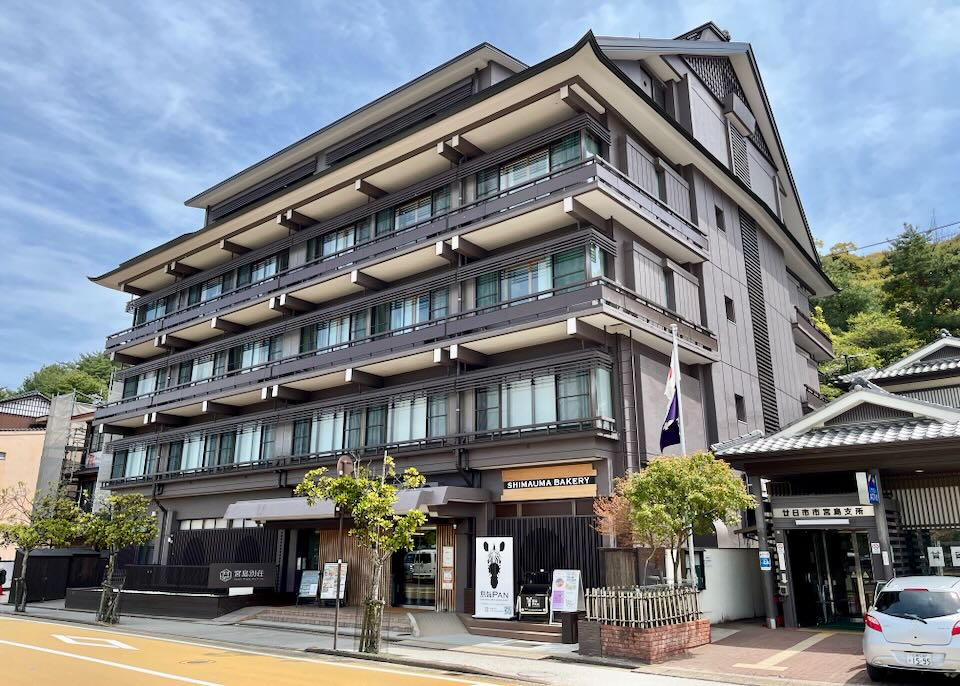
Hotel Miyajima Villa on Miyajima island.
- The Best Hotels in Miyajima
Mikuniya • Hotel phone: +81 829 44 1641
Kinsuikan • Hotel phone: +81 829 44 2131
Seaside Hotel • Hotel phone: +81 829 44 0118
Miyajima Villa • Hotel phone: +81 829 44 1180
Shiomachi-an • Hotel phone: +81 829 44 0008- Best Cheap/Midrange Hotels
Nakaya B&B • Hotel phone: +81 829 44 0725
Ryoso Kawaguchi • Hotel phone: +81 829 44 0018
Kikunoya • Hotel phone: +81 829 40 2400
Sakuraya • Hotel phone: +81 829 40 2805
Kaniwa • Hotel phone: +81 829 30 6679Hiroshima Travel Tips
- Language
Most hotels, some shops, and restaurants will have English speakers on hand, don’t assume everyone will understand you. The staff at the main JR Ticket Office at Hiroshima Station can communicate in English, menus usually have photos you can point at, and signage in the station (and around the city) is translated into English, but try to learn a few numbers and words in Japanese if you can.- Hiroshima Airport is around 30 miles (50km) east and only serves Japanese cities (plus Taipei). There are no trains to the city center – only a bus that takes about an hour or expensive taxi rides. If you get stuck here, the Hiroshima Airport Hotel is the most convenient place to stay. Traveling by bullet train (Shinkansen) is more convenient from Kyoto (1hr 40min) and even Tokyo (3hr 50min).
- Free wi-fi is available at hotspots throughout the city thanks to “Hiroshima_Free_Wi-Fi” – once you’ve registered your email, you can connect for 30 minutes (as many times as you like). Hiroshima Station, Hiroshima Peace Memorial Museum, and Hiroshima Castle are all covered.
- The city operates five tourist information centers, most open daily with English speakers: Peace Memorial Park (10am–5pm), Hiroshima Station (6am–midnight), Kamiya-cho Shareo Underground Shopping Area (11am–5pm), Hiroshima Bus Station (daily 9am–4pm), and Hiroshima Port (9am–4pm).
- If you’re short on time, a convenient option is the Hiroshima Sightseeing Loop Bus (“Hiroshima meipuru-pu”). View the main sights through three different route options around the city from Hiroshima Station. One ride is ¥220, but a much better value is the day pass at just ¥400.
Read More
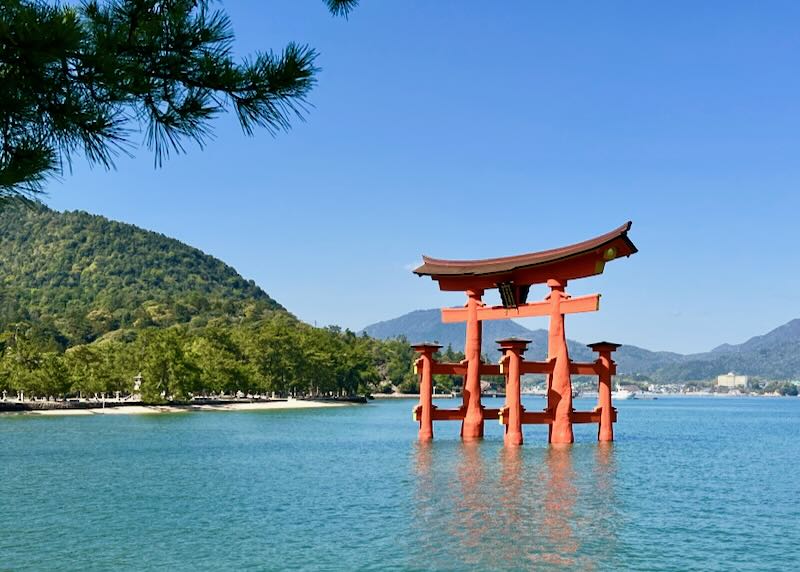
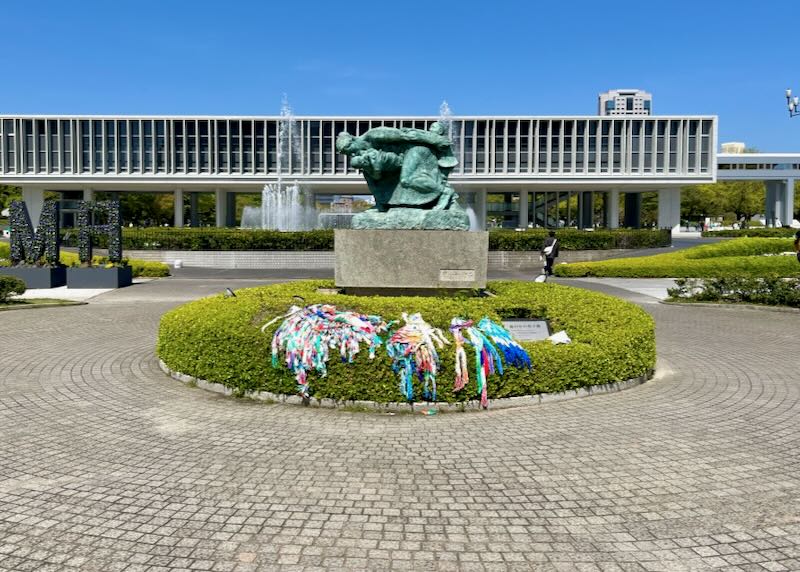
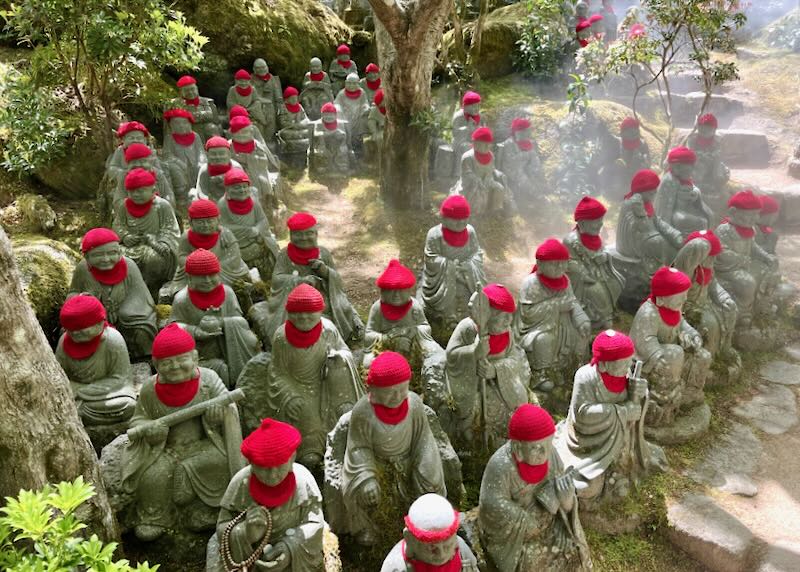
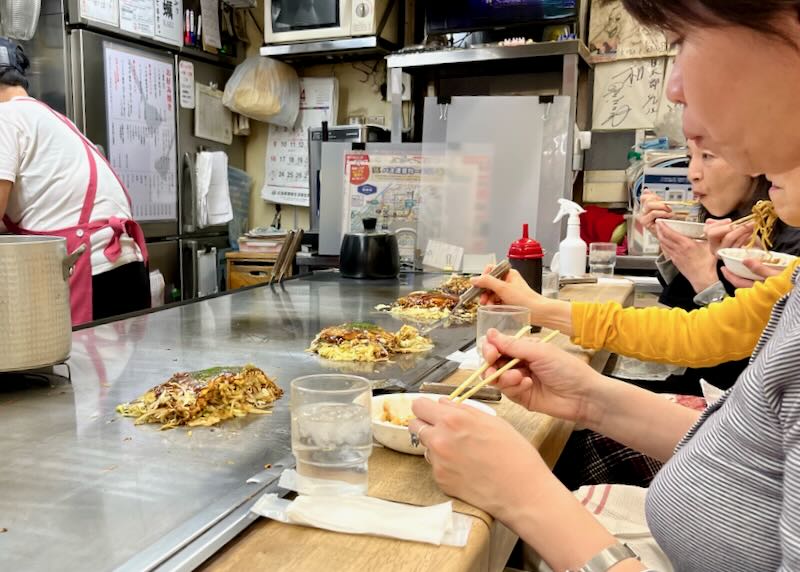
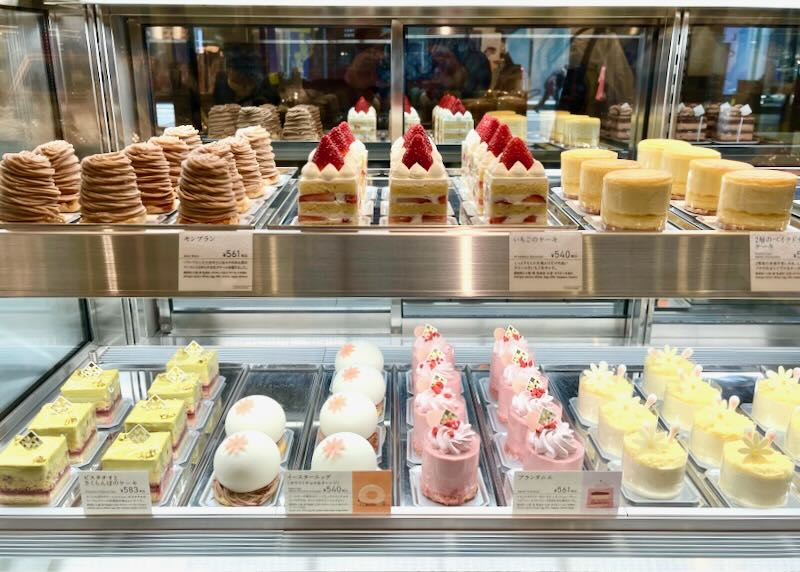
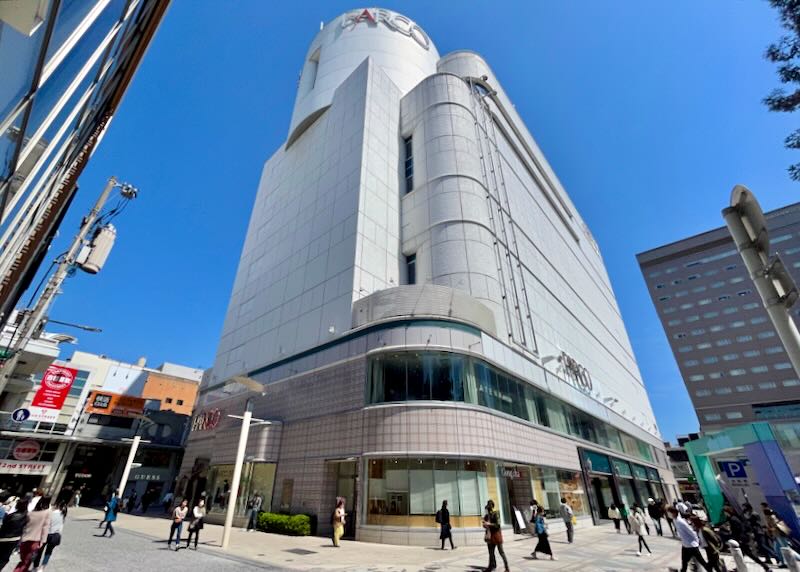
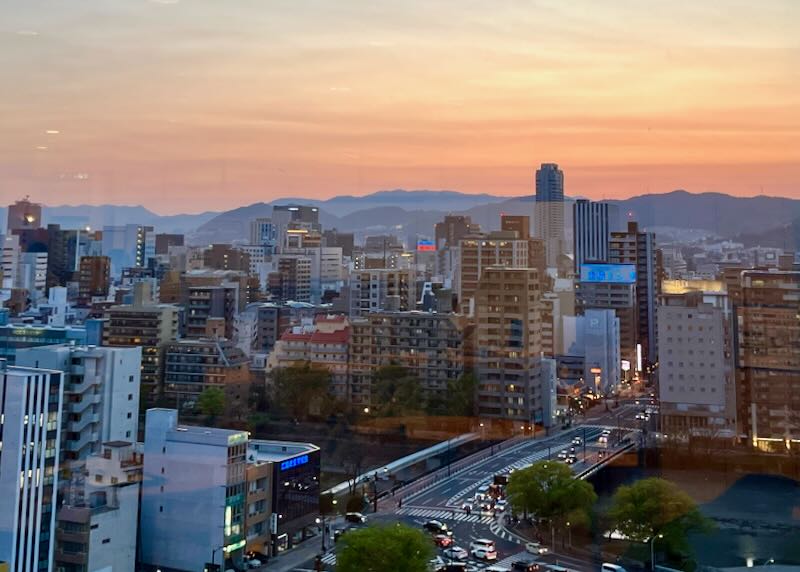
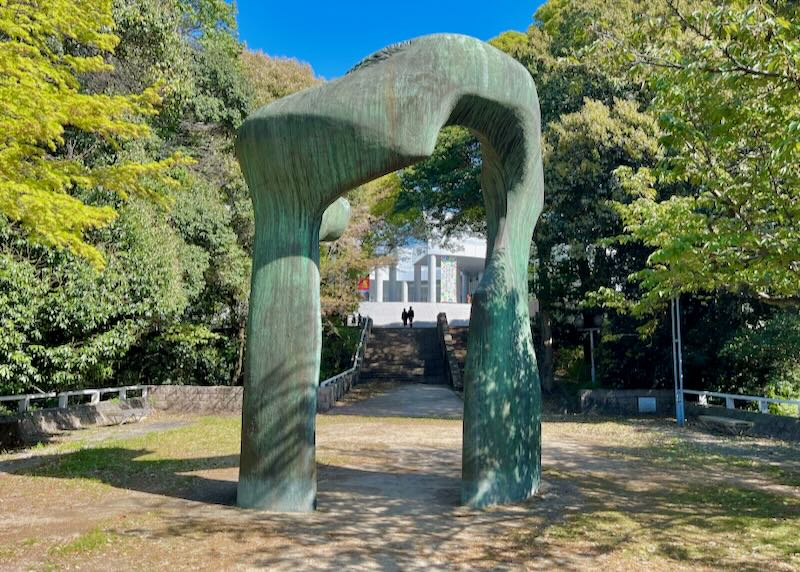
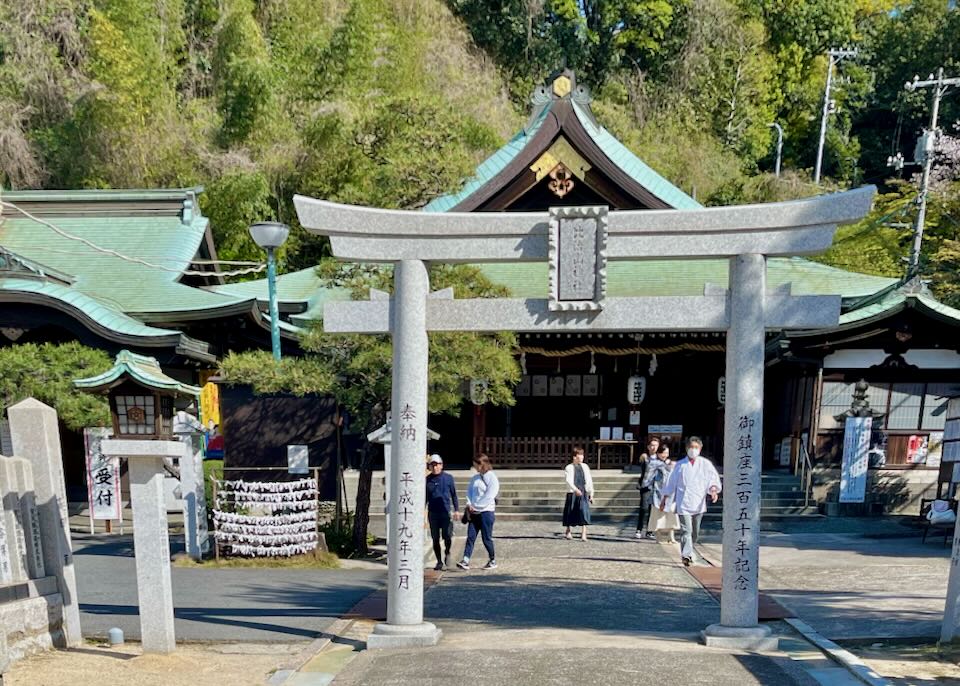
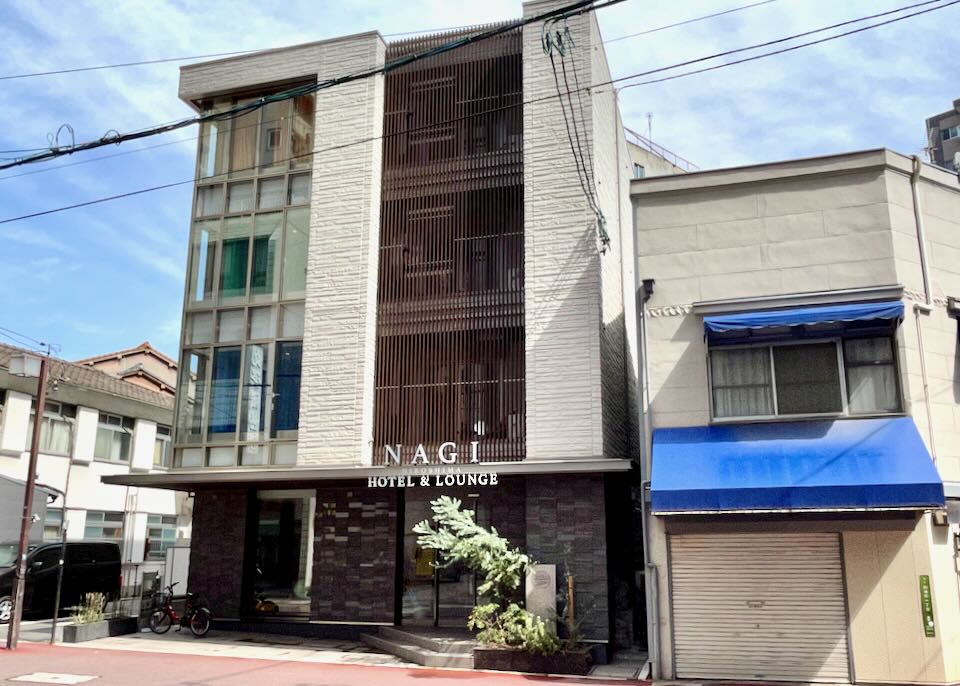
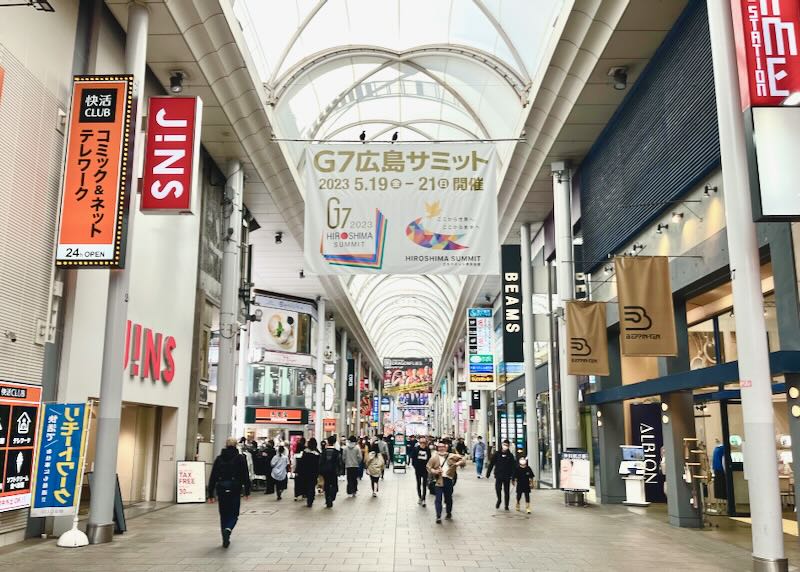
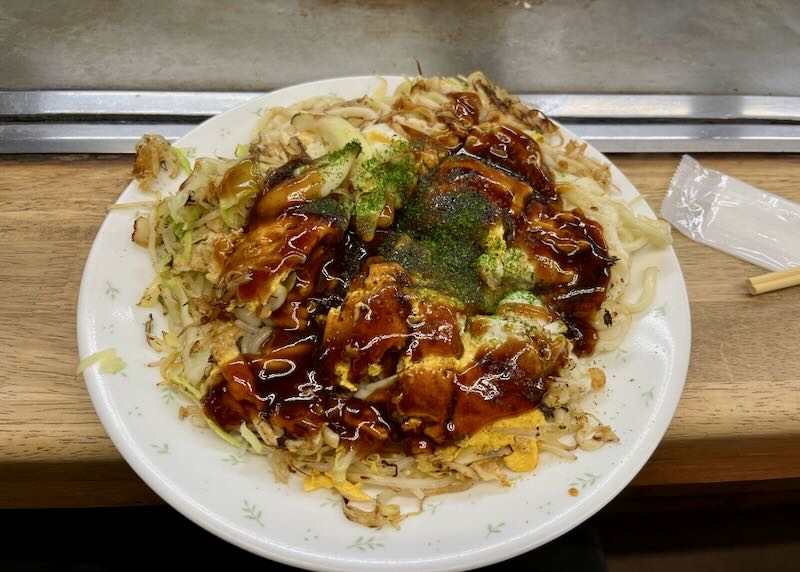
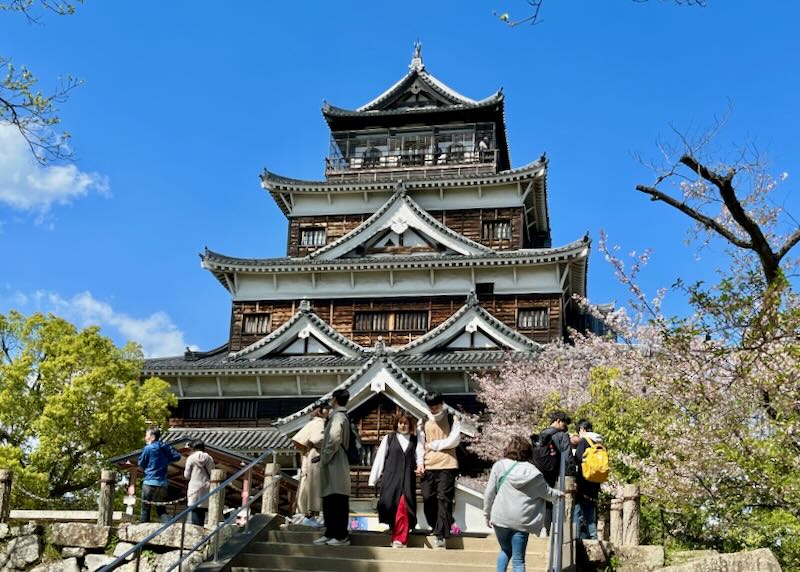
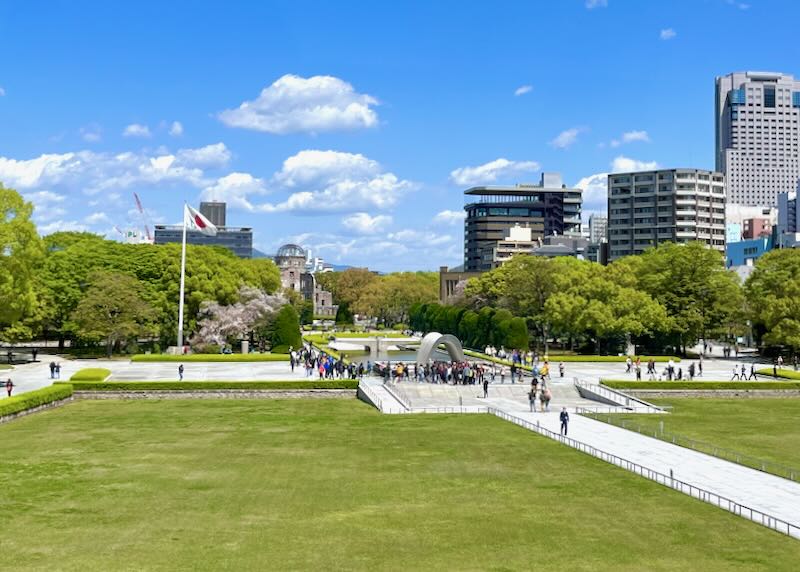
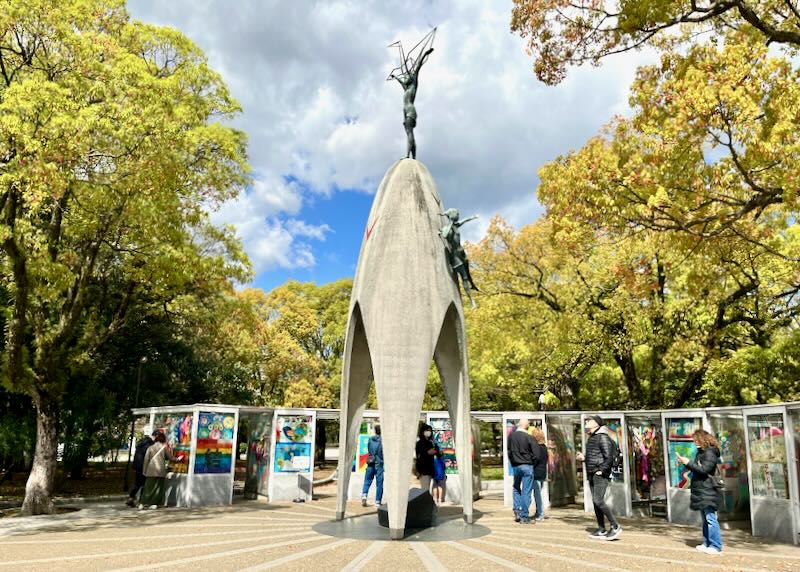
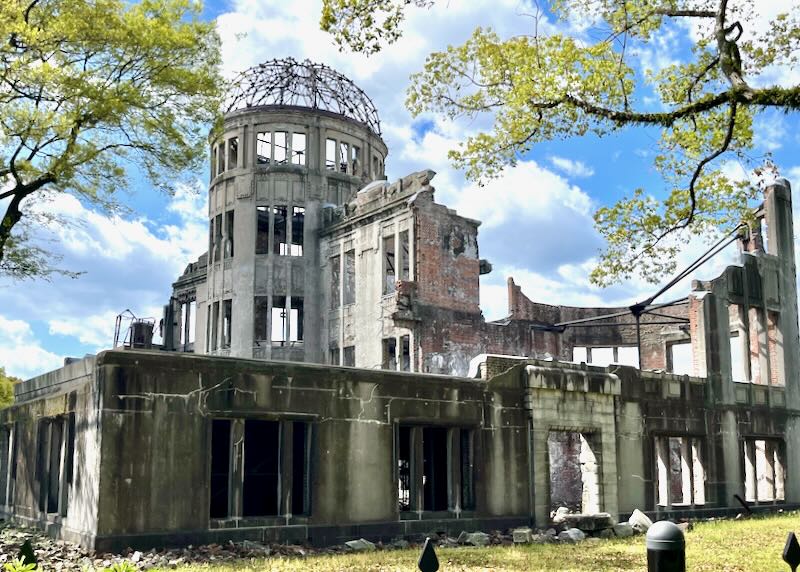
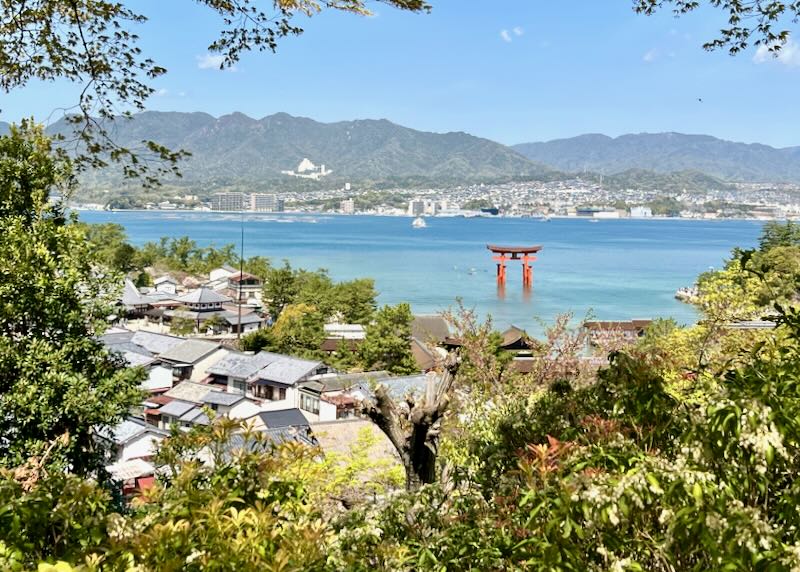
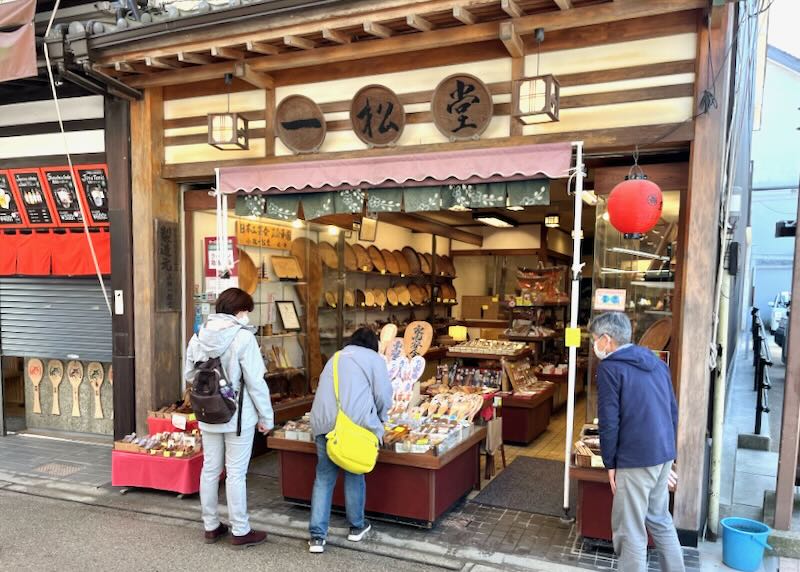
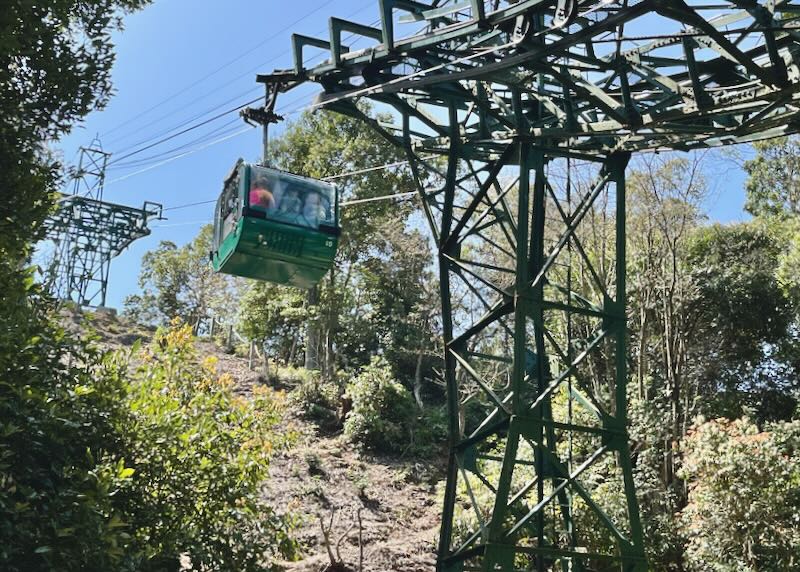
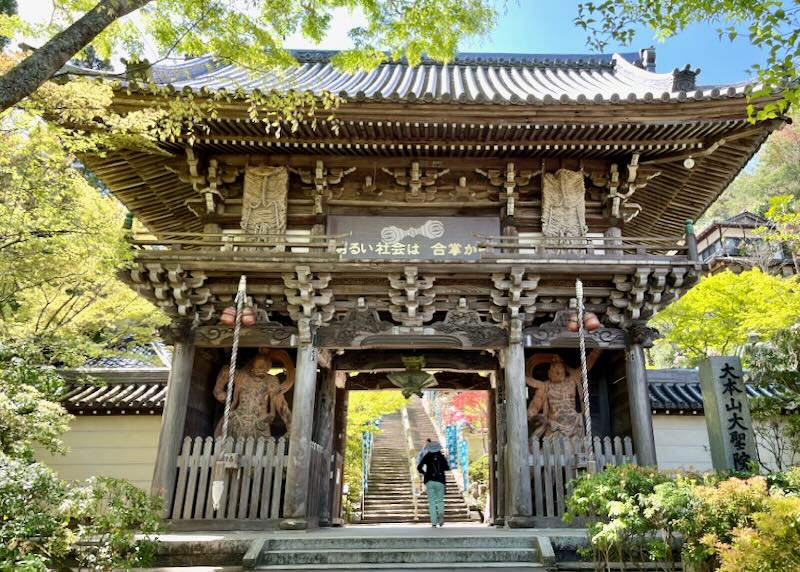
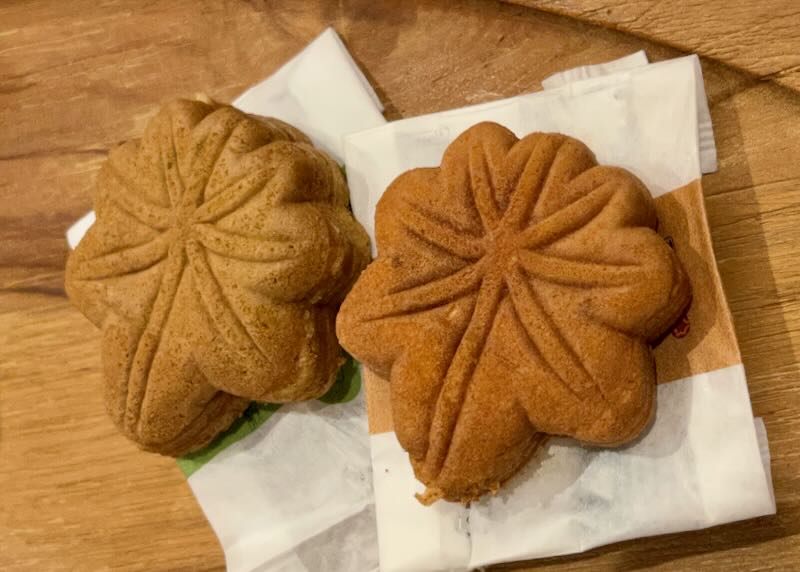
About Santorini Dave